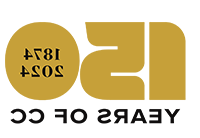
If you're not sure you're human, Jessy 兰德尔, curator and archivist in Special Collections at CC's Tutt Library, might be able to help. But don't expect a physiology book; instead, 兰德尔's new book of visual poetry, "How to Tell if You Are Human," might have the answer.
Although 兰德尔 has written numerous books of poetry, this is her first collection of visual, 或图, 诗. "Visual 诗 are their own weird sub-set of poetry,她说. "For me, the diagrams are like a poetic form.
"The diagrams I used for the scaffold usually provided, by their shape and sometimes by their original meaning, some kind of spark for the words I added,她说. 例如, a sketch of a school building and adjoining playground prompted this poem: "All day long we looked out the windows/and then at recess/we looked at each other." A graphic of the earth's sediment accumulating over time inspired this: "Slowly, 无情地, over many years of conversations and travels, they revealed their true natures. By the time they knew all each other's flaws, it was too late for them to stop being friends."
兰德尔, who has a degree in English from Columbia University and a master's in library science from the University of North Carolina-Chapel Hill (where she held a graduate assistantship in the Rare Book Collection and her thesis was a collection analysis of books by three modern poets) combines her library science background with her poetry. The two blend seamlessly throughout the book; take, 例如, an example of a poem/illustration that has its roots in "From Nebula to Nebula," a 1917 text that features a circle with intersecting lines. The diagram inspired 兰德尔 to write: "I am trying so hard not to turn into my mother/but my mother also tried very hard not to turn into her mother, so it's probably hopeless/I'm going to keep trying though." Says 兰德尔, "The circle with intersecting lines seemed to me to fit perfectly with the problem of children turning into parents, despite all our best intentions, over and over again, generation by generation."
All the diagrams in "How to Tell if You Are Human" are taken from illustrations in library books, says 兰德尔, who joined Colorado College as curator of Special Collections in 2001. They possibly might all even come from books in the Tutt Library 集合, although 兰德尔 says, "I'm not 100 percent sure about that - the project took many years, so I don't remember exactly how I came across all the books." The sources for the illustrations, most of which were published before 1923, are provided in the book's table of contents.
In addition to "How to Tell if You Are Human," due out from Pleiades Press on Oct. 1, other poetry 集合 by 兰德尔 include "Suicide Hotline Hold Music," "Injecting Dreams into Cows, "A Day in Boyland," which was a finalist for the Colorado Book Award. Her 诗, comics, other writings have appeared in Poetry, McSweeney's, Best American Experimental Writing. 兰德尔 also co-teaches a class in The History and Future of the Book.



